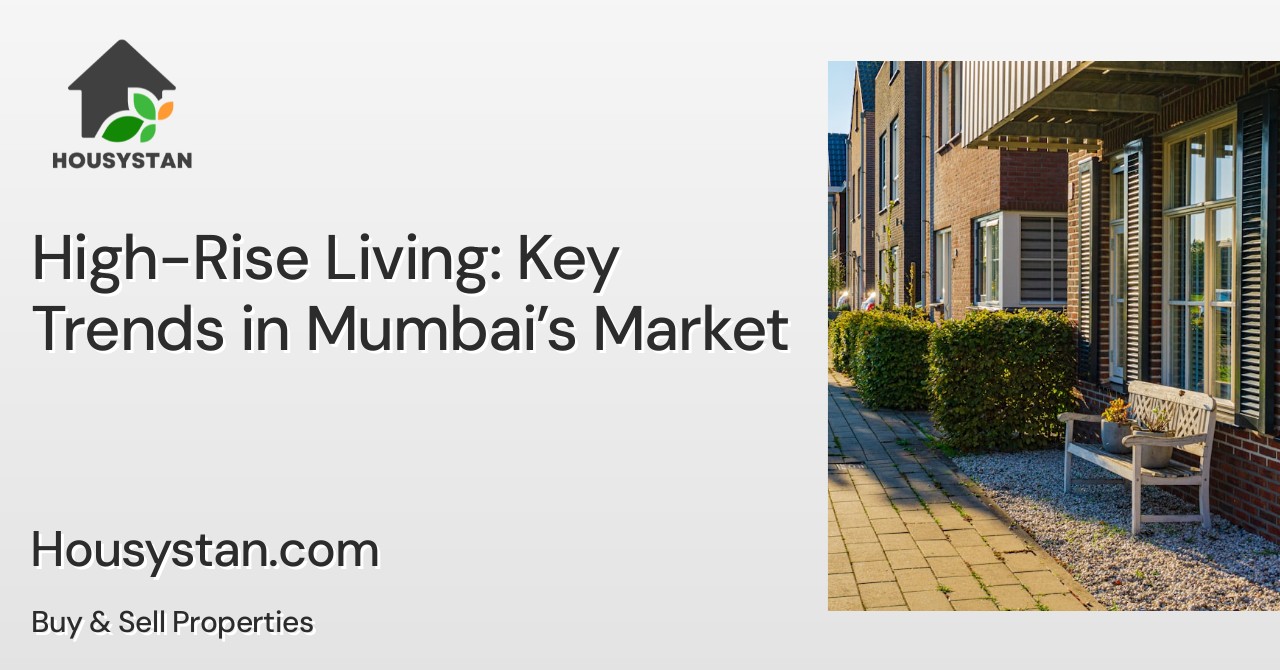High-Rise Living: Key Trends in Mumbai’s Market
Read latest blogs and articles from Housystan

The Information mentioned here was last updated on:
4/12/2025High-rise living has transformed the Mumbai real estate landscape, capturing the attention of homebuyers and investors alike. As India’s financial capital continues to expand, the demand for luxurious and convenient residential options is rising. Mumbai’s skyline is now dotted with striking skyscrapers, each offering a unique blend of modern amenities, prime locations, and spectacular views. This evolution has set new benchmarks for urban lifestyles in the city, making high-rise apartments the preferred choice for discerning residents.
One of the most prominent trends in Mumbai’s high-rise market is the growing emphasis on sustainable and eco-friendly architecture. Developers are integrating green building practices, such as energy-efficient systems, rainwater harvesting, and lush landscaped terraces, to reduce environmental impact. These features not only contribute to a healthier environment but also offer long-term savings for residents. As a result, eco-conscious buyers are gravitating towards towers that prioritize green living without compromising on luxury.
Another key trend shaping Mumbai’s residential sector is the focus on smart technology. High-rise buildings now come equipped with advanced security systems, automated lighting, and digital concierge services. These smart solutions deliver unparalleled convenience, enhance safety, and streamline daily routines for occupants. The integration of cutting-edge technology sets new standards in comfort and makes high-rise living in Mumbai truly future-ready.
- Verified Tenants/Buyers
- Unlimited Property Listing
- Zero subscription/charges fee
Location remains a critical factor for high-rise developments across Mumbai. Proximity to business districts, educational institutions, and healthcare facilities continues to drive demand in neighborhoods like Worli, Lower Parel, Bandra, and Powai. Residents benefit from seamless connectivity via well-developed road networks and metro lines, ensuring easy commutes and access to the city’s vibrant social scene. This connectivity further boosts the appeal of high-rise properties in these prime localities.
Community-oriented amenities are also central to the high-rise living experience in Mumbai. Rooftop pools, fitness centers, landscaped gardens, and multipurpose halls foster social interaction and promote a balanced lifestyle. Families, professionals, and retirees alike find value in these shared amenities, which contribute to a vibrant and inclusive community atmosphere. The steady influx of new projects and ongoing upgrades to existing towers reflect the dynamic nature of Mumbai’s high-rise market, positioning it as a top choice for those seeking comfort, convenience, and contemporary living in a world-class city.